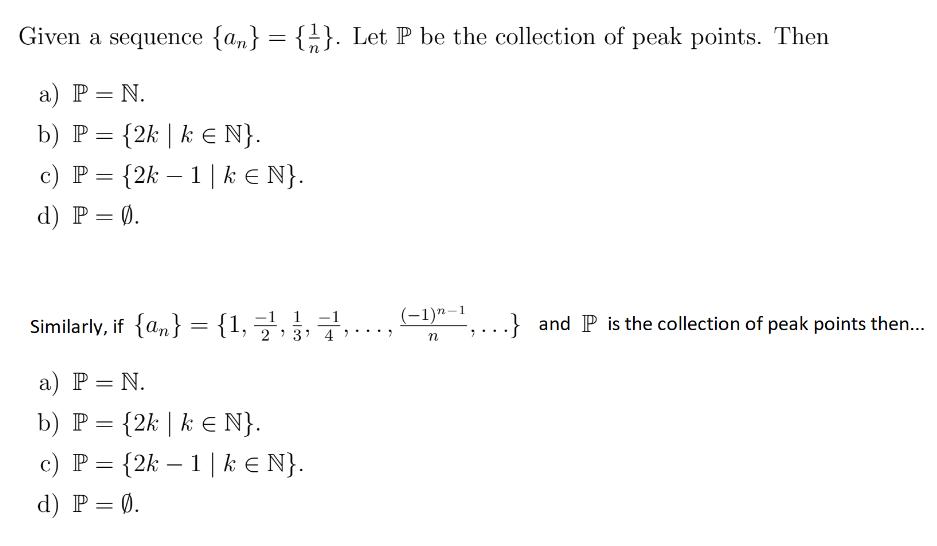Question
Given a sequence {an} = {}. Let P be the collection of peak points. Then a) P = N. b) P = {2k |

Given a sequence {an} = {}. Let P be the collection of peak points. Then a) P = N. b) P = {2k | kE N}. c) P = {2k - 1 | k N}. d) P = 0. Similarly, if {a} = {1, , 3, 7, ..., a) P = N. b) P = {2k | kE N}. c) P = {2k1 | ke N}. d) P = 0. (-1)n-1 n and P is the collection of peak points then...
Step by Step Solution
3.35 Rating (158 Votes )
There are 3 Steps involved in it
Step: 1
The detailed answer for the above question is provided below Answer 1 Given an 1n It is a strictly ...
Get Instant Access to Expert-Tailored Solutions
See step-by-step solutions with expert insights and AI powered tools for academic success
Step: 2

Step: 3

Ace Your Homework with AI
Get the answers you need in no time with our AI-driven, step-by-step assistance
Get StartedRecommended Textbook for
Linear Algebra with Applications
Authors: Steven J. Leon
7th edition
131857851, 978-0131857858
Students also viewed these Accounting questions
Question
Answered: 1 week ago
Question
Answered: 1 week ago
Question
Answered: 1 week ago
Question
Answered: 1 week ago
Question
Answered: 1 week ago
Question
Answered: 1 week ago
Question
Answered: 1 week ago
Question
Answered: 1 week ago
Question
Answered: 1 week ago
Question
Answered: 1 week ago
Question
Answered: 1 week ago
Question
Answered: 1 week ago
Question
Answered: 1 week ago
Question
Answered: 1 week ago
Question
Answered: 1 week ago
Question
Answered: 1 week ago
Question
Answered: 1 week ago
Question
Answered: 1 week ago
Question
Answered: 1 week ago
Question
Answered: 1 week ago
Question
Answered: 1 week ago
View Answer in SolutionInn App



